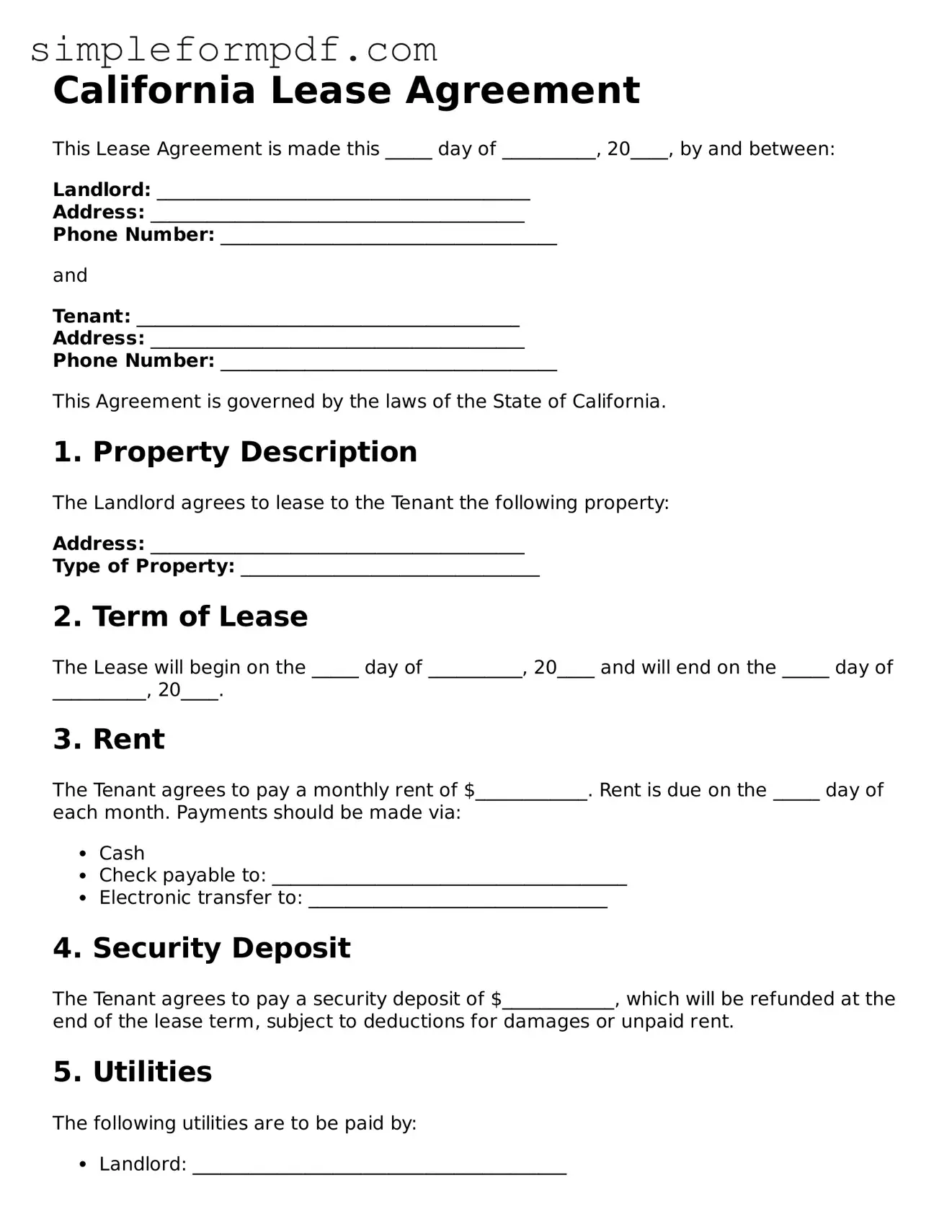California Lease Agreement
This Lease Agreement is made this _____ day of __________, 20____, by and between:
Landlord: ________________________________________
Address: ________________________________________
Phone Number: ____________________________________
and
Tenant: _________________________________________
Address: ________________________________________
Phone Number: ____________________________________
This Agreement is governed by the laws of the State of California.
1. Property Description
The Landlord agrees to lease to the Tenant the following property:
Address: ________________________________________
Type of Property: ________________________________
2. Term of Lease
The Lease will begin on the _____ day of __________, 20____ and will end on the _____ day of __________, 20____.
3. Rent
The Tenant agrees to pay a monthly rent of $____________. Rent is due on the _____ day of each month. Payments should be made via:
- Cash
- Check payable to: ______________________________________
- Electronic transfer to: ________________________________
4. Security Deposit
The Tenant agrees to pay a security deposit of $____________, which will be refunded at the end of the lease term, subject to deductions for damages or unpaid rent.
5. Utilities
The following utilities are to be paid by:
- Landlord: ________________________________________
- Tenant: _________________________________________
6. Maintenance and Repairs
Responsibilities for maintenance and repairs will be as follows:
- Landlord: ________________________________________
- Tenant: _________________________________________
7. Use of Property
The Tenant agrees to use the property solely for residential purposes and not to engage in any illegal activities.
8. Termination
Termination of this Agreement requires a written notice of ____ days by either party.
9. Signatures
By signing below, both parties agree to the terms outlined in this Lease Agreement.
Landlord’s Signature: ____________________________
Date: _______________
Tenant’s Signature: ____________________________
Date: _______________
